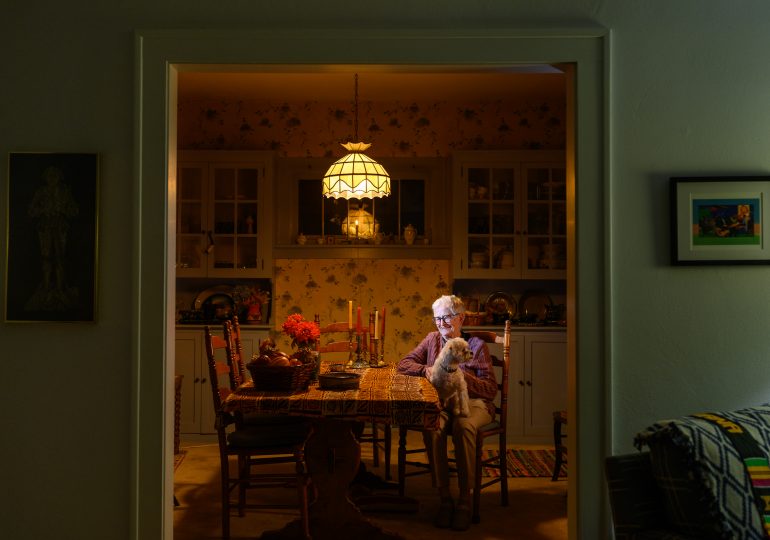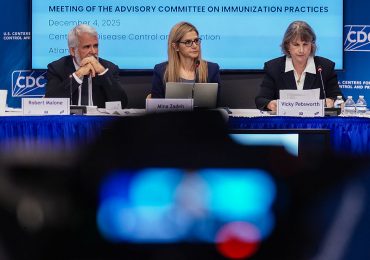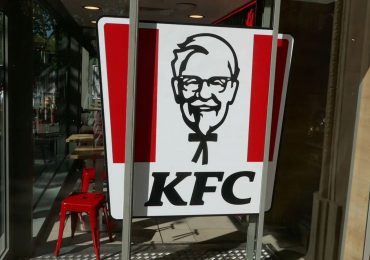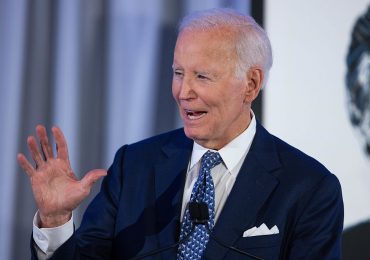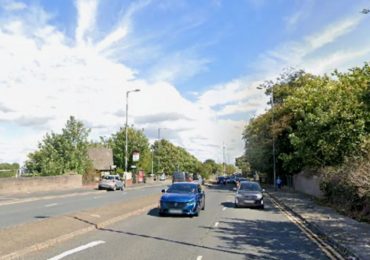An hour south of Cleveland, as my rented Kia crosses into Canaan Township one afternoon this October, I pass a farm that’s home to a herd of goats. I turn toward the passenger seat, which is empty, and exclaim, to no one: “Goats!”
I am not from around here.
For many years, however, Wayne County, Ohio, was a place I thought I knew. In 2008, as a recent college graduate, I arrived there to take a field organizing job with Barack Obama’s presidential campaign. For five formative months, a tiny Democratic Party headquarters in Wooster, the county seat, was the center of my universe.
[time-brightcove not-tgx=”true”]
When it came to the most important part of my job—signing up volunteers—Obama organizers had a saying: “They come for Barack, but they stay for you.” I differed from my candidate in several important respects, such as age, race, and whether or not I was running for president. But I, too, was an outsider. I, too, had arrived seemingly out of nowhere, a city dweller with a fancy education and limited experience, asking strangers to believe that a Black man with the middle name Hussein could win people over everywhere, even in bright-red, rural Ohio.
And he did. On Election Night, buoyed by hundreds of the “vols” who made the campaign tick, Obama became the first Democrat to win the town of Wooster since Lyndon Johnson in 1964. Wayne County—which was 95% white, and where less than a quarter of adults had a bachelors’ degree—swung left by eight percentage points from just four years earlier, going from bright red to light pink.
“I never thought I’d live to see this,” Linda Houston told me as results came in. A 5-ft.-tall professor a few years from retirement, she kept a mental map of every yard sign in a 12-mile radius. She had also allowed me—or more accurately, ordered me—to stay in her upstairs guest room rent-free. Linda was referring that night to the election of a Black president. But she was also talking about something closer to home. Democrats had long felt like pariahs in places like Wayne County. Now, finally, their neighbors were coming together around a shared vision, one that transcended politics.
What happened next to the place I once thought of as “my turf” is, as with many things involving Donald Trump, both shocking and by now familiar. In 2012, while Republican Mitt Romney gained a little ground in rural Ohio, Obama won the state. After that, Democrats cratered. In 2016, Trump improved on Romney’s Wayne County performance by 15%. Four years later, he added three more points to his own winning margin.
At one time, I counted it as a personal triumph that John McCain won Wayne County by less than 8,000 votes. Trump won it by more than 20,000. I can’t help but take that a little personally, too. Without meaning to, I’ve spent my entire adult life on the East Coast, and like most people in the NPR belt, the MAGA-fication of places like Wayne County has both frightened and bewildered me. Who switched? Why? What did I not see?
Which is why, 16 years after Obama’s election, I wanted to return to the place that shaped my understanding of politics.
“Cows!” I say to no one. But not even the livestock can push aside the foreboding I feel.
About a week before my visit, I emailed former volunteers to let them know I’d be coming, and to ask them to put me in touch with the people they knew who gone from supporting Obama to supporting Trump. Judging from election results, in which nearly every precinct showed a rightward shift, these voters had to be everywhere. But just about everyone I asked insisted they didn’t know any switchers. Even Linda, who everyone agrees knows everyone, drew a blank.
“I’ll try to find some people for you to talk to,” she promised. Then she asked, in a way that was not a question, “You’re staying in your old room when you visit, right?”
Read more: The Dread Election
Linda’s long since retired, and her husband, Dan, passed away five years ago. But she still lives in the same two-story colonial they moved into 55 years ago. It’s in the heart of Wooster, a relative metropolis of about 27,000 people, and to get there I must first pass through what my vols called “out in the county.” In the sparsely populated farmland and tiny towns, every yard sign I see is a Trump one. Even on the outskirts of town, near the shopping plaza and the megachurch, the GOP is winning lawns in a landslide. Then the houses get closer together. By the time I cross an invisible line near the Methodist Church and the small liberal-arts college, Harris-Walz dominates the sign wars.
Linda lives in the middle of this tiny blue oasis, and her lawn has signs for candidates so far down the ballot I didn’t even know they existed. “You remember which room’s yours, right?” she says, before I’m even through the door. I put my things away, and when I come back downstairs to the kitchen she tells me she only knows one person who switched sides. “But that was a long time ago,” she says, “mostly because of abortion. Plus, he used to be a judge, and now his son’s a judge, and to be a judge these days you have to be a Republican. We don’t really talk anymore.”
“Well, just theoretically, why do you think people have switched?” I ask. Linda shakes her head. She’s been feeling politically outnumbered since the 1970s, yet she, too, seems to be confused by a place she thought she knew.
I don’t know exactly why so many people would swing from Obama to Trump either—that’s why I’m here—but I do have a theory. Back when I worked in Wooster, Rubbermaid, the town’s longtime economic engine, had recently shut down its plant. The factory’s closure took jobs, and confidence, with it. Even before the economic crisis, it was easy for our campaign to rent an office downtown; there were plenty of vacant storefronts to choose from. Like many Democrats living on the coasts, I’d figured that people in places like Wayne County were left behind in the recovery that followed, and that Trump’s “American carnage” rhetoric touched a nerve.
Read more: The Reinvention of J.D. Vance
It takes me less than five minutes to realize that my assumption is incorrect. Wooster is thriving. There are two coffee shops a block apart from each other, each serving carefully sourced cold brew. An antique store has opened. There’s even a microdistillery just south of Liberty Street. Most of the businesses I frequented—from Buehler’s Café to Arby’s—are still open. The only exception is The Parlor, a diner; in its place is a farmhouse-chic café called The Leaf.
At Mariola’s, one of many new restaurants in town, I meet Jim and Inez Bird for dinner, and they confirm my impression. “People are moving here for the jobs,” he says. GoJo, the maker of Purell, took over the old Rubbermaid plant. Old mainstays like The Wooster Brush Company and Smucker’s Jam survived the recession and came out of it hiring. Newcomers like Schaffler’s transmissions and Daisy dairy products are hiring, too.
Part of Obama’s promise to Ohio was that he wouldn’t give up on the so-called “Rust Belt”; that together, we could put people back to work and start making things in America again. I can’t speak for every part of the state, but in Wayne County, it’s hard to argue that was anything but a promise kept. In November 2016, the countywide unemployment rate was 3.8%—down from 11.1% at the peak of the recession. The year before, the finance website NerdWallet named Wooster one of “America’s 10 best small cities to live in.” Voters nevertheless swung toward Trump.
“So if the economy doesn’t explain the change, what does?” I ask Inez. She shakes her head, the same way Linda did a few hours before.
“You must know some people who vote Republican, though?”
“Not really,” Jim replies. Then he starts thinking. “Well, there’s one guy, but he used to be a judge. Oh, and there’s our son. And our friends from before the kids were born. And your brother.”
I ask Inez why she thinks her brother likes Trump, but even she doesn’t know. Seeming to recoil in fear at the suggestion, she tells me that she’s never asked.
This, at last, was a clear difference between 2008 and 2024. Back then, people in Wayne County didn’t talk politics because they were too polite. Now, they don’t talk politics because they’re too afraid. Nearly every former volunteer I talk to has a story about people—friends, family members, colleagues—who are no longer speaking because they kept arguing about Donald Trump.
Then there are the relationships that only survive because of what wasn’t being discussed. “We decided we didn’t want to let Trump ruin our marriage,” Cindy Bernardy, an academic administrator at the nearby College of Wooster, tells me at lunch the next day.
Steve Bernardy, her husband and a lifelong Republican who voted for Obama before twice supporting Trump, no longer fully counts as a switcher—he plans to vote for Harris because of Jan. 6—but he and his wife remain on political eggshells. When, talking about the attack on the Capitol, he says that no one saw it coming, Cindy and I exchange a look. But neither of us says anything. Still, Steve is the first Obama-Trump voter I’ve found who will talk to me, so I ask him what he thinks explains Wayne County’s shift.
“It can’t be the economy,” I say, but before I can continue, he tilts his head in a way that says not so fast.
“I’m doing better than ever, financially,” he tells me. “But I don’t feel good about it. I worry the markets could crash at any moment.”
How weird, I think. When things are going so well, why can’t you just enjoy it? And then I think about myself, and about nearly every Democrat I know in an age of climate change and rising authoritarianism and AI coming for our jobs. “What unites us is greater than what divides us,” President Obama used to proclaim, even after it seemed that such a notion was no longer supported by the evidence. But maybe he was right. What unites us today is a sense of impending doom.
Instead of bringing us together, however, our shared sense of dread has only divided us further. Trump and his allies blame the precarious state of the world on a growing parade of non-existent bogeymen—pet-eating migrants and weather-controlling cabals and teachers who give children sex changes without parental consent—that they promise to destroy. The result is a feedback loop. Trump voters are afraid of whatever Trump tells them to be afraid of. Harris voters are afraid of Trump. And each side is afraid to talk to the other.
It must be said that, at least on a local level, Democrats’ fears don’t end at fractured relationships. Back at Linda’s house, one of her friends who lives out in the county takes a sign urging voters to support an anti-gerrymandering referendum. But she declines signs for Harris or for Senator Sherrod Brown. “This is the only one I feel safe putting up,” she says.
No one I spoke to told me they think Trump is directly calling for violence against them—or even against their yard signs. The rise of the Tea Party turned politics personal before Trump showed up—Jim tells me he had a job interview cancelled because of the Obama sticker on his car—and Trump’s shredding of national norms has inspired at least a handful of more local bullies.
“Has anyone told you about the parade?” Clyde Crabtree asks me. Clyde is a white-haired former director of the Human Services Department in Holmes County, a even redder, more rural county to the south of Wayne. He spent most of the ’08 campaign doing odd jobs in the office and hazing me for being from New York City.
“Right before the 2016 election,” he says, “About 50 trucks from out in the county all drove together down Cleveland Avenue.” His face grows tense just thinking about it. While 50 pickups may not seem like much, “Midwest nice” was once sacred here. Chamber of Commerce Republicans never put on this type of campaign event. To bring a convoy of pickups from out in the county sent an unsubtle message: this is our town now.
“I’m not shaken easily,” Clyde tells me. “But I was really shaken by that.”
So were the College of Wooster’s students. They still are—even though today’s freshmen were just 10 years old at the time. Ava Fink, the chair of the campuses’ College Democrats, tells me that drivers yelled slurs at some of the non-white students; there have been other low points in town-gown relations since then, some even scarier. Ava says excitement about the election has soared since Harris became the Democratic nominee. But she’s still surprised when I tell her that back in my day, the College Dems canvassed in the community. They don’t do that very much anymore. They don’t feel safe off campus.
Ava is from a small town in rural Michigan. The trends I think of as stunning have been happening for her entire young-adult life.
“Why do you think all this is happening?” I ask her.
“I really don’t know,” she says. “I’m a political science major, but I don’t focus on the U.S.”
“Micropolitan!” says my friend Zach Wahls when I call him the next afternoon. He’s in Iowa, where he serves as a state senator, and I’m at an Old Navy in the shopping center near the megachurch, where I’m buying gym shorts. While I’ve never heard the term micropolitan before, I know at once that it applies to Wayne County. While the population is rural, people tend to cluster in towns, and most don’t actually farm full-time.
In 2018, Zach was elected to a district with two Obama-to-Trump counties. He’s thought a lot about the not-quite-suburbs; so has the Harris campaign, for which it will be crucial to do better in micropolitan areas of Pennsylvania, Wisconsin, and Michigan. Democrats nationwide would be wise to think about these parts of the country, too. If the party wants to reclaim Senate seats in once-blue states like Indiana and Missouri, or erase the GOP’s electoral college advantage under Trump, they need to stop losing places like Wayne County by such overwhelming margins.
Read more: Your Vote Is Safe
Like everyone else I talk to, Zach isn’t really sure how that might happen. But he, too, doesn’t think the sea change in voting habits can be explained by economics. Many Iowans he knows are concerned, in a way that is both deeper and vaguer than either party’s policy agenda, that Democrats want to turn Iowa into Chicago or San Francisco. Social media makes this fear more acute than ever. The old saying, “If it bleeds, it leads,” was designed for an era of local news. These days, though, what bleeds in cities leads in small towns. It’s easier than ever to be frightened by places and people we never actually see.
This leads Zach to another theory, one put forward by the writer Will Wilkinson. “It used to be that someone living in rural Iowa felt he had way more in common with someone living in urban Iowa than someone living in rural Mississippi,” Zach tells me. “Now it’s the opposite.”
I won’t say that, standing in the checkout line at Old Navy, everything made sense to me. But I suddenly rethought everything I’d seen over the past few days. The cold-brew coffee and microdistilleries, the local produce and The Leaf. These weren’t just signs of economic progress. They’d become their own kind of identity politics, a salvo in the culture wars. I was from around here after all. Downtown Wooster now has more in common with a gentrifying neighborhood in Brooklyn or Philadelphia than it does with Apple Creek, population 1,184, less than 15 minutes away. No wonder my volunteers were as perplexed by Wayne County’s politics as I was. No wonder we were getting creamed.
Back in 2008, we ran door-to-door canvasses every day, even in early October. But enthusiasm wanes when you’re no longer a swing state, and it was a weekday. I could find just one pair of door-knockers to accompany into the field.
After George Floyd was killed in 2020, one of those door-knockers, Desiree Weber, helped lead a Black Lives Matter protest at the intersection of Liberty and Market Streets. The protest continued for 1,221 straight days, until the Wooster Police Department finally banned the use of chokeholds by its officers. The counterprotests were nearly as sustained, but, she tells me, the opposition wasn’t explicitly anti-BLM. Instead, they were anti-lockdown.
It’s a striking image. Two groups simultaneously protesting each other and protesting past each other, so far apart that they can’t even agree which issue they‘re disagreeing on. In our polarized country, nearly everyone would have no trouble picking a side, and I’m no exception. I know which protest I think was on the right side of history. But in a democracy, right is not all that matters. Numbers matter, too. And if Wooster joins the NPR belt while the rest of Wayne County becomes part of Trump Country, the population of the former will be dwarfed by that of the latter.
Of course, voters change. Trends shift. Things you thought you’d never live to see occur. That, I suspect, is what keeps people like Linda going. Ever watchful of yard signs, she tells me that this year some surprising lawns are on Team Harris. She thinks there’s a real chance that, buoyed by enthusiasm for Harris and exhaustion with Trump, they’ll win back at least some of the voters they lost over the last eight years. Even if that’s not enough to win Ohio—and it almost certainly won’t be—it might be part of larger trend. Clyde thinks so, too. Back at Buehler’s Café, he told me that he’s optimistic about November. He’s not the only one. Jim says an unprecedented number Republicans have come into Democratic headquarters to make donations. Desiree tells me that a surprising number of Republican women she meets while canvassing are furiously anti-Trump. “She’s going to win,” Clyde says. “I really think that.”
“It sounds like 2008,” I say. “You’ve got hope!” I smile. But his face falls.
Clyde doesn’t look much older than he did when I first met him. When we talk politics, his eyes still light up. There’s something behind them, though—exhaustion, dread, sheer bewilderment at the choices some of his fellow Americans have made. Or maybe I’m just projecting.
“It’s different now.” he says to me. “People are afraid to hope.”
Leave a comment
